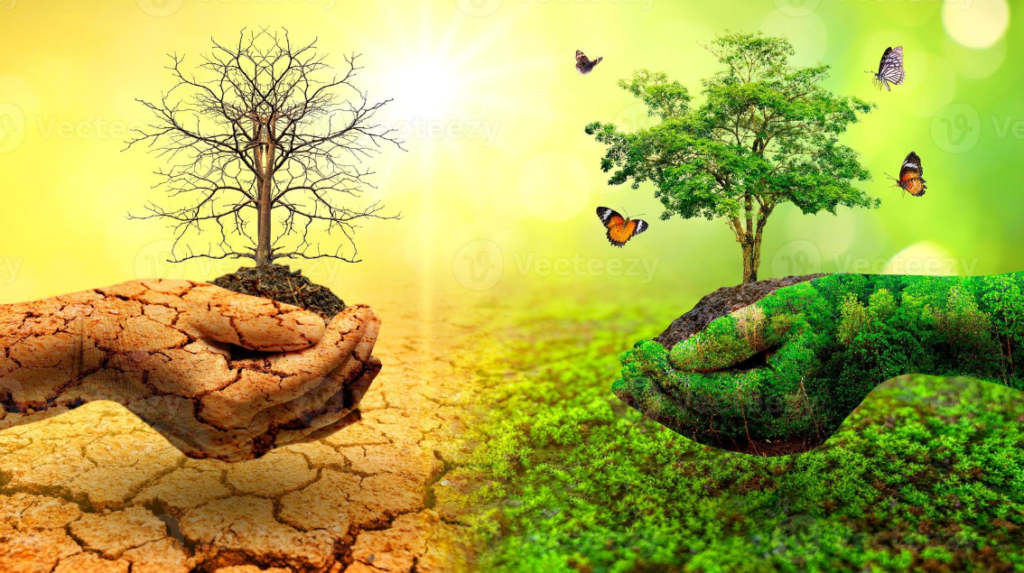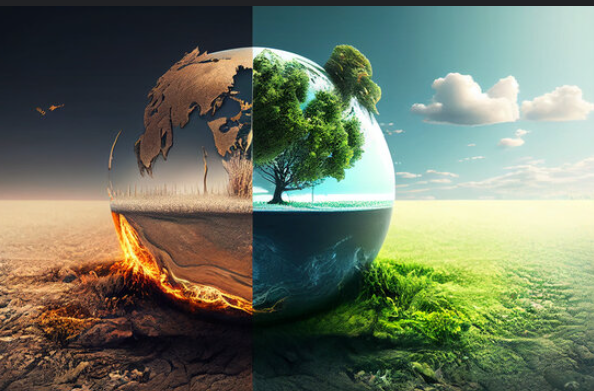1. Rising Temperatures and Heatwaves
One of the most obvious effects of global warming is the rise in average global temperatures. According to climate scientists, the Earth’s average temperature has already increased by about 1°C since the pre-industrial era, with significant consequences. As this trend continues, we will face more intense and prolonged heatwaves, especially in regions like Europe, the Middle East, and South Asia.

Impact on Human Health
Extreme heat directly impacts human health. Heatwaves can lead to heat exhaustion, heatstroke, and other heat-related illnesses. The elderly, children, and people with preexisting health conditions are particularly vulnerable. Moreover, higher temperatures can worsen respiratory conditions like asthma by increasing the levels of pollutants and allergens in the air.
Energy Consumption
As temperatures rise, the demand for air conditioning and cooling will increase, placing significant strain on energy grids. This leads to higher energy bills for households and businesses and could cause energy shortages in regions where electricity is already limited. Increased energy demand also means higher emissions unless clean energy sources are used, creating a vicious cycle that exacerbates global warming.
2. Melting Ice Caps and Rising Sea Levels
Polar ice caps and glaciers are melting at an accelerated rate due to global warming. This process has far-reaching consequences, especially for coastal regions.
Read More : The Ubiquitous Threat: Understanding the Impact of Plastic Pollution
Rising Sea Levels
As ice melts, it contributes to rising sea levels. Coastal cities like New York, Miami, Mumbai, and Tokyo are already facing the risks of flooding, and this risk will only grow in the coming decades. By the year 2100, scientists predict that sea levels could rise by 1 to 3 feet (0.3 to 0.9 meters), potentially displacing hundreds of millions of people living in low-lying areas. Countries like Bangladesh, where a large portion of the population lives just a few meters above sea level, are particularly vulnerable.
Saltwater Intrusion and Agriculture
In addition to the threat of flooding, rising sea levels can lead to saltwater intrusion, where seawater infiltrates freshwater sources like rivers and aquifers. This contaminates drinking water supplies and renders farmland less fertile. Saltwater intrusion is already a significant issue in places like Southeast Asia, where rice farming is a primary source of food and income.
3. Extreme Weather Events
Global warming is linked to the increased frequency and intensity of extreme weather events, such as hurricanes, typhoons, droughts, floods, and wildfires. These events disrupt ecosystems, economies, and communities, and the impacts are often devastating.
Hurricanes and Typhoons
Warmer ocean waters provide more energy to fuel hurricanes and typhoons, making these storms stronger and more destructive. In recent years, we have seen record-breaking storms like Hurricane Harvey in 2017 and Typhoon Haiyan in 2013. These storms cause widespread destruction, displacing millions of people, damaging infrastructure, and costing billions in recovery efforts.
Droughts and Wildfires
Global warming also contributes to longer and more severe droughts in many regions, particularly in areas like the western United States, Australia, and sub-Saharan Africa. Droughts threaten water supplies, lead to crop failures, and increase the risk of wildfires. Wildfires have already become more common in places like California and Australia, where massive blazes have destroyed homes, forests, and wildlife habitats.
4. Impact on Ecosystems and Biodiversity
As temperatures rise and weather patterns shift, ecosystems around the world are being disrupted. Species that are unable to adapt quickly enough to these changes face the threat of extinction. The loss of biodiversity has cascading effects on ecosystems and human society.
Coral Reefs and Ocean Life
Coral reefs, often called the “rainforests of the sea,” are particularly vulnerable to global warming. Rising sea temperatures cause coral bleaching, where corals expel the symbiotic algae that give them color and provide essential nutrients. Without these algae, corals starve and die. Coral reefs are crucial for marine biodiversity, supporting thousands of species, and they also protect coastlines from storm surges. The death of coral reefs threatens not only marine life but also the livelihoods of millions of people who depend on fishing and tourism.
Shifting Habitats
Many species are shifting their habitats in response to changing climates. Animals in mountainous regions, for example, are moving to higher elevations in search of cooler temperatures. However, there is a limit to how far species can move, and some, like polar bears and snow leopards, may soon find themselves with no suitable habitat left. This loss of habitat disrupts food chains and ecosystems, leading to further species declines.
5. Human Health and Disease
Global warming has direct and indirect effects on human health. The spread of diseases, water quality, and food security are all closely tied to climate conditions, and as the planet warms, these issues are becoming more severe.
Spread of Diseases
Warmer temperatures expand the habitats of disease-carrying organisms like mosquitoes and ticks. Diseases such as malaria, dengue fever, and Lyme disease are spreading to new regions as these insects thrive in warmer climates. This creates new public health challenges, particularly in areas that were previously free from these diseases and lack the infrastructure to manage outbreaks.
Water and Food Security
Global warming is also putting pressure on water and food resources. Changes in rainfall patterns are leading to water shortages in some areas, while other regions are experiencing more intense flooding. Both extremes can damage agriculture, leading to reduced crop yields and food insecurity. In parts of Africa, Asia, and Latin America, millions of people could face hunger as a result of climate-induced crop failures.
6. Economic Impact
The economic consequences of global warming are staggering. Industries such as agriculture, fishing, tourism, and insurance are particularly vulnerable, but no sector is immune from its effects.
Agriculture and Food Production
Global warming is already reducing the productivity of key crops like wheat, maize, and rice. As temperatures rise, yields decline, particularly in tropical and subtropical regions. Droughts, floods, and unpredictable weather further complicate farming efforts, leading to food shortages and price spikes. For poorer regions that rely heavily on agriculture, this can lead to increased poverty and malnutrition.
Insurance and Infrastructure
Natural disasters related to global warming, such as hurricanes and wildfires, are leading to massive insurance payouts. Insurance companies are facing increasing risks, and in some regions, premiums are rising to the point where coverage is becoming unaffordable. Additionally, governments must spend more on disaster relief and rebuilding infrastructure, diverting funds from other critical areas like education and healthcare.
7. Social Inequality and Migration
The effects of global warming do not affect all populations equally. Vulnerable communities—particularly those in developing countries—are disproportionately impacted. These populations often lack the resources to adapt to changing conditions, making them more susceptible to the negative effects of global warming.
Climate Refugees
As sea levels rise, droughts worsen, and extreme weather events become more common, millions of people may be forced to leave their homes, creating a new class of migrants known as “climate refugees.” This displacement can lead to overcrowding in urban areas, strain resources, and increase the likelihood of conflicts over water, land, and food.
Social and Political Tensions
The strain on resources and the displacement of populations can exacerbate existing social and political tensions. In some cases, this may lead to conflicts, particularly in regions already dealing with issues like poverty, inequality, and weak governance. Climate change can act as a “threat multiplier,” intensifying existing problems and creating new ones.

Conclusion
Global warming is not just an environmental issue; it is a profound threat to human health, economic stability, social structures, and ecosystems. The impacts are already being felt, and they will only worsen if global temperatures continue to rise. Addressing global warming requires collective action at all levels—individual, governmental, and global. Reducing greenhouse gas emissions, transitioning to renewable energy, and investing in sustainable practices are essential steps to mitigate the worst effects of global warming and protect the planet for future generations.

Leave a comment